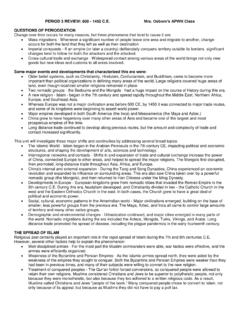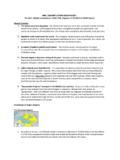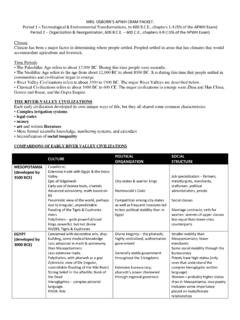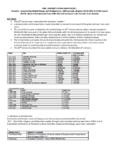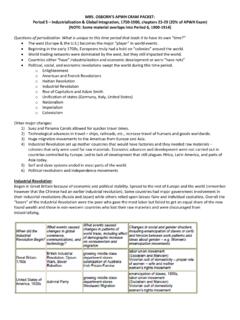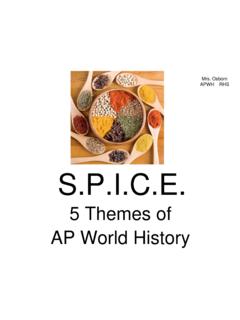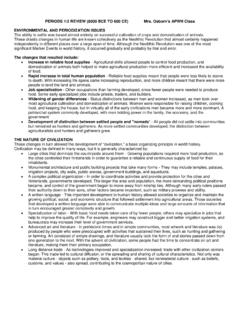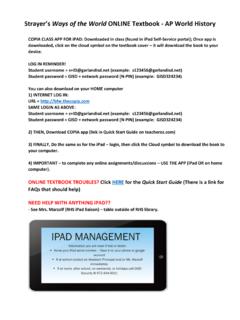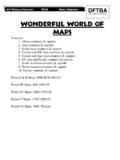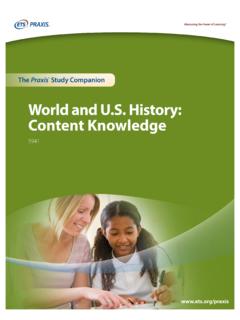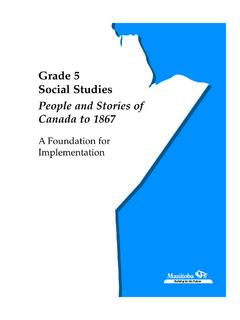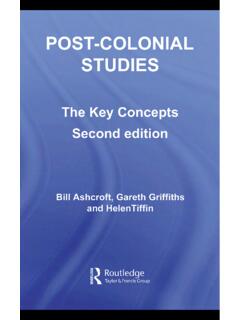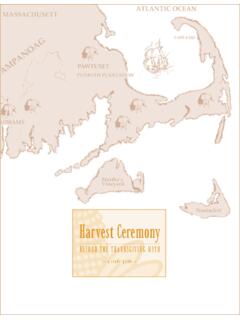Transcription of PERIOD 4 REVIEW: 1450 - 1750 C.E. Mrs. Osborn s APWH Class ...
1 PERIOD 4 REVIEW: 1450 - 1750 Mrs. Osborn s APWH Class QUESTIONS OF PERIODIZATION This era includes only 300 years, but some profound and long-lasting changes occurred. Characteristics of the time between 1450 and 1750 include: 1) The globe was encompassed - For the first time, the western hemisphere came into continued contact with the eastern hemisphere. Technological innovations, strengthened political organization, and economic prosperity all contributed to this change that completely altered world trade patterns.
2 2) Sea-based trade rose in proportion to land-based trade - Technological advancements and willingness of political leaders to invest in it meant that sea-based trade became much more important. As a result, old land-based empires lost relative power to the new sea-based powers. 3) european kingdoms emerged that gained world power - The relative power and prosperity of Europe increased dramatically during this time in comparison to empires in the longer-established civilization areas. However, Europe did not entirely eclipse powerful empires in Southwest Asia, Africa, and East Asia.
3 4) The relative power of nomadic groups declined - Nomads continued to play an important role in trade and cultural diffusion, and they continued to threaten the borders of the large land-based empires. However, their power dwindled as travel and trade by water became more important. 5) Labor systems were transformed - The acquisition of colonies in North and South America led to major changes in labor systems. After many Amerindians died from disease transmitted by contact with Europeans, a vigorous slave trade from Africa began and continued throughout most of the era.
4 Slave labor became very important all over the Americas. Other labor systems, such as the mita and encomienda in South America, were adapted from previous native traditions by the Spanish and Portuguese. 6) "Gunpowder Empires" emerged in the Middle East and Asia - Empires in older civilization areas gained new strength from new technologies in weaponry. Basing their new power on "gunpowder," they still suffered from the old issues that had plagued land-based empires for centuries: defense of borders, communication within the empire, and maintenance of an army adequate to defend the large territory.
5 By the end of the era, many were less powerful than the new sea-based kingdoms of Europe. MAJOR DEVELOPMENTS - 1450-1750 Changes in Trade, Technology, and Global Interactions - The Atlantic Ocean trade eventually led to the crossing of the Pacific Ocean. New maritime technologies made these interactions possible, and global trade patterns changed dramatically. Major Maritime and Gunpowder Empires - Major maritime powers include Portugal, Spain, France, and England, and major Gunpowder Empires were the Ottoman, Ming and Qing China, the Mughal, Russia, Tokugawa, Songhay (Songhai), and Benin.
6 Slave systems and slave trade - This was the big era for slave systems and slave trade, with the new european colonies in the Americas relying on slavery very heavily. The slave trade was an important link in the Atlantic Ocean trade. Demographic and environmental changes - The new trade patterns greatly altered habitats for plants and animals and resulted in changes in human diet and activities as well. Major migrations across the Atlantic Ocean also altered demographic patterns profoundly. Cultural and intellectual development - This era also was shaped by the european Renaissance, Protestant Reformation, and Enlightenment.
7 Neo-Confucianism grew in influence in China, and new art forms developed in the Mughal Empire in India. CHANGES IN TRADE, TECHNOLOGY, AND GLOBAL INTERACTIONS The two areas that worked most actively to rebuild trade were China and Europe. MING CHINA AND THE OUTSIDE WORLD When the Ming drove the Mongols out, they were intent on restoring the glory of Han China, and they turned first to restoring China's internal trade and political administration. Even though the Ming emperors were wary of foreigners, China had too long prospered from trade to give it up completely, and foreigners eagerly sought silk, porcelain and manufactured goods, in exchange for spices, cotton fabrics, gems, and pearls.
8 In order to restore Chinese hegemony in Asia, Emperor Yongle sponsored seven naval expeditions commanded by Admiral Zheng He, whose voyages took place between 1405 and 1433. For each journey he launched a fleet of vessels like the world had never seen before. The Chinese junks were huge with nine masts, by far the largest ships ever launched up until that point in history. The main purposes of the voyage were twofold: to convince other civilizations that China had indeed regained their power and to reinstitute tribute from people that no longer gave it.
9 The latter did not bring any income to China, mainly because the cost of the voyages and gifts was more than any revenue they stimulated. Zheng He's voyages were halted in the 1430s when Emperor Yongle died. Confucian bureaucrats, who had little desire to increase China's interactions with other civilizations, gained control of the court and the new emperor, and refused to continue to finance the voyages. According to the new court, the money was needed to better protect the empire from its age-old problem: nomadic invasions from the west.
10 The voyages and the Ming reaction to them provide good evidence for the pattern that was setting in: the impulse to trade and contact others v. the tendency to turn inward for fear of the negative effects on the Han Chinese. european EXPLORATIONS Across the globe, as the mid-15th century approached, kingdoms in another area were ready to venture to the open seas with motivations very different from those of the Chinese: Profit from commercial operations - Geographically, Europe was on the outskirts of the established trade routes.
